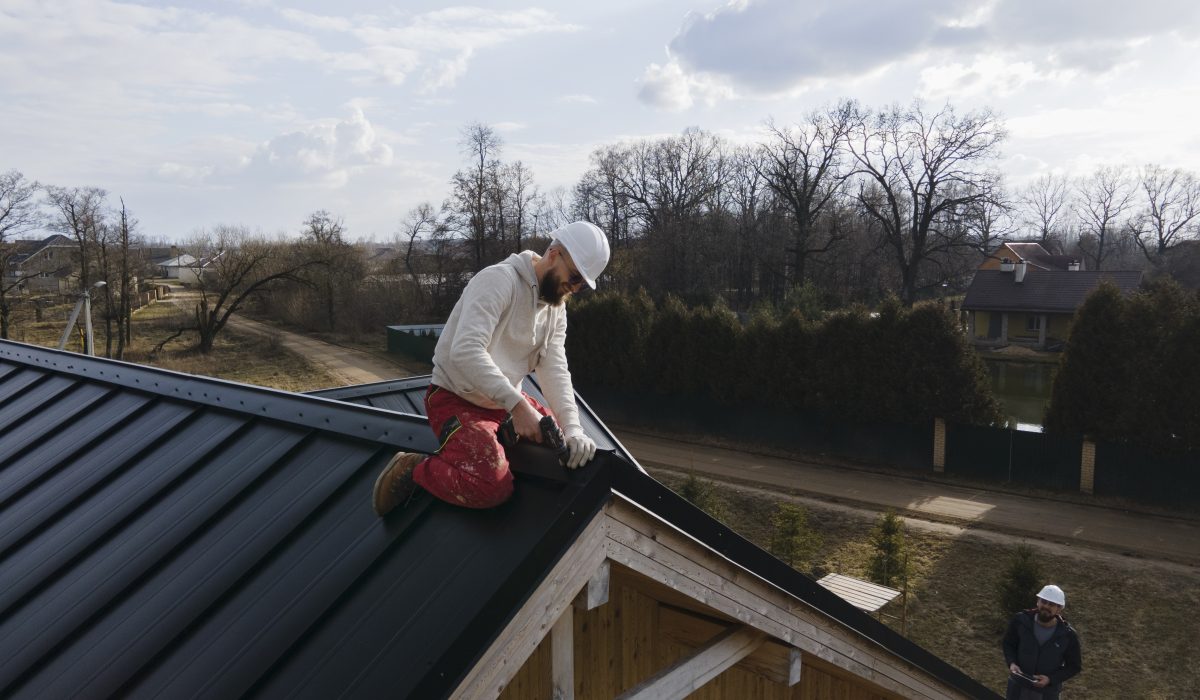What is Built-Up Roofing and How Does It Work?
Built-Up Roofing, or BUR, is a durable roofing system made up of layers of bitumen and reinforcing fabrics. This system is designed to protect flat or low-slope roofs from harsh weather conditions. If you’re looking for the best roof repair in Miami or considering roofing options, understanding BUR can help you make informed decisions.
BUR has a long history dating back to the 1840s when it used tar and gravel, evolving with the introduction of asphalt in the 1960s. It consists of base sheets, interply sheets, cap sheets, and protective surfacing like gravel for UV resistance.
The installation process involves surface preparation, layering with hot-applied bitumen, and finishing with protective surfacing. The complex layering is key to its longevity and resilience.
Definition of Built-Up Roofing
Built-Up Roofing, also known as BUR, is a traditional roofing system that has been widely used for decades in the construction industry. BUR consists of multiple layers of bitumen alternated with reinforcing fabrics, creating a durable and long-lasting roof membrane. The bitumen can be either asphalt or coal tar, providing excellent waterproofing properties.
These layers are typically installed on top of a roof deck, with a top layer of gravel or a reflective coating to protect the bitumen from UV radiation and mechanical damage. BUR systems are known for their resilience and ability to withstand extreme weather conditions. Proper installation and maintenance of Built-Up Roofing systems are necessary to ensure optimal performance and longevity.
History and Evolution
Throughout the history of roofing systems, the evolution of Built-Up Roofing has been marked by significant advancements in materials and installation techniques. Dating back to the 1840s, Built-Up Roofing, also known as BUR, initially consisted of multiple layers of tar and gravel. Over the years, innovations in materials led to the introduction of asphalt as a primary component in the 1960s, enhancing durability and waterproofing capabilities.
These improvements revolutionized the industry, making Built-Up Roofing a popular choice for flat and low-slope roofs. With the evolution of installation techniques, such as torch-down applications and modern adhesives, Built-Up Roofing has become even more efficient and long-lasting, providing exceptional protection against the elements.
Layers and Components
The composition of Built-Up Roofing involves a series of distinct layers and components carefully assembled to secure structural integrity and weather resistance. Typically, a BUR system consists of multiple layers of bitumen-saturated felt or fabric. These layers are alternated with hot-applied bitumen, forming a durable membrane. A base sheet is first installed directly onto the roof deck, followed by interply sheets to enhance strength.
The top layer, known as the cap sheet, provides protection from the elements and UV radiation. Flashing components, such as gravel or mineral surfacing, can be added for weatherproofing. Proper installation and layer sequencing are necessary to secure the longevity and performance of a Built-Up Roofing system.
Materials Used in BUR
Materials commonly used in BUR systems include bitumen-saturated felt or fabric layers, hot-applied bitumen, base sheets, interply sheets, cap sheets, and flashing components like gravel or mineral surfacing. Bitumen-saturated felt or fabric layers serve as the foundational element, providing strength and durability. Hot-applied bitumen, typically heated to temperatures exceeding 400°F, acts as the adhesive, securing the layers together.
Base sheets offer further enhancement, improving the roof’s stability. Interply sheets are sandwiched between the layers to improve waterproofing and strength. Cap sheets, often made of asphalt or a polymer-modified material, form the topmost layer, safeguarding the roof from the elements. Lastly, gravel or mineral surfacing serves as extra protection and UV resistance for the roofing system.
Installation Process
To properly execute the installation process for Built Up Roofing (BUR), careful preparation and precise application techniques are required. Surface preparation begins with cleaning the roof surface thoroughly to guarantee proper adhesion. The layering process then involves applying alternating layers of bitumen and reinforcing fabrics. Hot mopping is performed by heating bitumen to a molten state and applying it to the roof surface.
Smoothing and compacting come next, using a roller to smooth out the layers and ensure proper bonding. The final step involves adding protective surfacing, which includes a layer of gravel or mineral granules to safeguard the roof from UV rays and physical damage. Each step builds upon the previous one to create a watertight, durable roofing system.
Benefits and Maintenance
Built-Up Roofing (BUR) provides excellent waterproofing and UV protection, making it highly durable and long-lasting. Its multi-layered structure enhances insulation, reducing heating and cooling costs. BUR is also fire-resistant and can withstand heavy foot traffic.
To maintain BUR, regular inspections are needed to identify and repair any damage promptly. Clearing debris, ensuring proper drainage, and addressing ponding water are vital for extending the roof’s lifespan. Periodic recoating and resealing help maintain its protective layers. By staying proactive with maintenance, BUR roofs can continue to provide superior performance and longevity.
Related Topics:


2 Comments
Comments are closed.